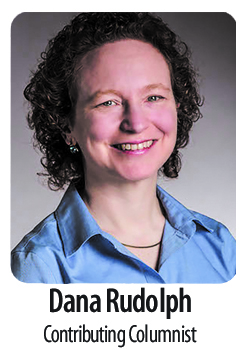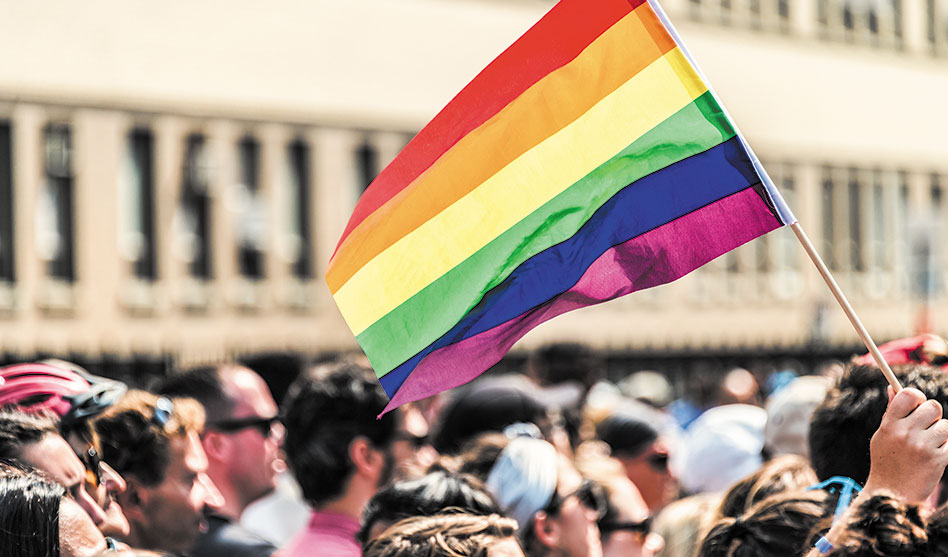As we celebrate LGBTQ History Month, it is important to remember our families’ place in history
DANA RUDOLPH | Contributing Writer
Mombian.com
 October is LGBTQ History Month, and I could write — as I have in the past — about the long history of LGBTQ parents, arguably going back to Sappho (7th-6th century BCE) and Alexander the Great (4th century BCE). This year I instead want to remind us that we and our families are part of this long history, and to encourage us to think about how we can preserve our own family histories and pass them on to our children.
October is LGBTQ History Month, and I could write — as I have in the past — about the long history of LGBTQ parents, arguably going back to Sappho (7th-6th century BCE) and Alexander the Great (4th century BCE). This year I instead want to remind us that we and our families are part of this long history, and to encourage us to think about how we can preserve our own family histories and pass them on to our children.
For queer people, “family” can mean many different things. Regardless, the shared experiences and connections that comprise a family history remind us of why we are a family. They can give our children a sense of belonging, convey values and heritage and offer insight into the people in their lives.
And while far too many of us queer folks have difficult relationships with some extended family members (or no relationships with them at all), remember that history is not just facts, names and dates; it is also stories and interpretation. And our stories are ours to tell when and how we wish.
If there are parts of our histories that are painful, we do not have to tell them, or we can tell them differently to our children as they — and we — are at different ages and places of understanding. I offer the ideas below as suggestions to use, adapt or ignore as you see fit and as fits your family and the ages of your children.
• Preserve and organize family photos. Many of us already take scads of family photos. If you’re anything like me, though, they could use some organization. Consider making collages or photo books of selected images for each year or ones centering a particular family member’s life or a family experience like holiday preparations, a vacation or even a family immigration story. Or print extra copies and let your kids make their own collages of people and events. These can then become prompts for storytelling.
• Map the connections of our families. Traditional family trees are often problematic for queer folks, and while some online genealogical services now allow for the inclusion of same-sex relationships, they still do not have a way to indicate more than two parents, birth parents, egg or sperm donors or genders other than male and female. Why not, then, come up with other ways of showing our family connections, however we define them? Instead of a tree, how about a whole orchard, a garden full of intertwining plants, or a sky full of constellations?
Use an analogy that works for you so that your children can learn about the many people in their families — including chosen family — and how they connect.
• Capture family stories. When I was a child, I used to love hearing my mom tell me the story of the day I was born or having her and my dad tell stories of their childhoods. Both of them have now passed, and I wish we had thought to record some of these tales. We may think we’ll always remember, but time has a way of blurring memories, and there’s no substitute for hearing a story in someone’s own voice.
Modern technologies make it easier than ever to preserve stories of significant moments in our own lives or the family tales that always get told at holidays or the recollections we can elicit from family elders. A smartphone video or Zoom connection is all it takes.
• Create a family time capsule. Select a few photos, small pieces of memorabilia, newspaper clippings or printouts of online news articles and other items that evoke your recent family activities and events in the larger world that have had an impact on you. If your children are old enough, have them contribute. Put the items in a shoebox or other container and seal it up for a set period of time, which can vary depending on the age and patience of your children. You could even time it to milestones like birthdays or graduations. Open it up at the end of the time period to reminisce and reflect.
• Share our family stories with others. This is not for everyone; the privacy and safety of our children are paramount. But for those who so choose, sharing our stories can be a powerful way of supporting others and creating change, whether it’s telling a queer prospective parent how you created your family, talking with a queer youth group about how you came out, writing an article or being interviewed about some other aspect of your life or family, queer-related or not, or testifying about your family in support of — or opposition to — a particular piece of legislation.
• Finally, though, let us remember not to get so caught up in preserving and telling our family histories that we forget to simply be in the moment and enjoy time with our families. Don’t always be the annoying person with the video camera, but maybe use this month as an excuse to be so for a brief time.
LGBTQ history, like the history of any subject, is often taught as one of Great People (Harvey Milk, Marsha P. Johnson, etc.) and Big Events (Stonewall, the battle for marriage equality, etc.) Those are certainly significant, but it is no dimming of their greatness to say that LGBTQ history is also the history of each and every LGBTQ person and our families.
Our lives may cast smaller lights, but like the stars, we fill the sky.
Dana Rudolph is the founder and publisher of Mombian (mombian.com), a GLAAD Media Award-winning blog and resource directory, with a searchable database of 750+ LGBTQ family books, media, and more.

